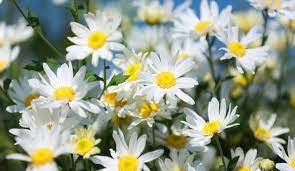**The Story and Cultural Significance of Chrysanthemums Across Different Cultures**

Chrysanthemums, with their rich history and cultural symbolism, hold significant meaning across various cultures worldwide. Let’s delve into the captivating narratives and cultural significance of chrysanthemums in different cultural contexts.
**1. Ancient China:**
In Chinese culture, chrysanthemums symbolize longevity, rejuvenation, and nobility. Dating back to the Zhou dynasty (1046–256 BCE), chrysanthemums were revered by scholars and poets, celebrated in literature, and cultivated in imperial gardens. The flower’s resilience and ability to bloom late into autumn epitomize the virtues of endurance and perseverance, making it a cherished emblem of Confucian values. During the Double Ninth Festival (Chongyang Festival), observed on the ninth day of the ninth lunar month, chrysanthemums are prominently featured in decorations and offerings to ward off evil spirits and bring good fortune.
**2. Japan:**
In Japan, chrysanthemums hold profound cultural significance as the imperial crest and national flower. Known as “kiku,” chrysanthemums symbolize the Japanese monarchy and are intricately linked to the country’s imperial family. The Chrysanthemum Throne, or “Kōkyo,” is the traditional name for the Japanese monarchy, reflecting the flower’s central role in imperial symbolism. The Chrysanthemum Festival, or “Kiku no Sekku,” held on the ninth day of the ninth month, honors the flower’s beauty and auspicious qualities, with displays of chrysanthemum arrangements and exhibitions across Japan.
**3. Korea:**
Chrysanthemums, known as “Gukhwa” in Korean, are revered for their association with longevity, loyalty, and resilience. In Korean folklore, chrysanthemums are believed to possess medicinal properties and protective powers against evil spirits. The flower’s intricate patterns and vibrant colors are celebrated in traditional Korean art forms, including painting, embroidery, and pottery. During the Chrysanthemum Festival, or “Gukhwatangjit,” held in autumn, Koreans enjoy chrysanthemum tea and admire elaborate chrysanthemum displays, symbolizing prosperity and well-being.
**4. Western Culture:**
In Western cultures, chrysanthemums are admired for their beauty and versatility in floral arrangements. While the flower’s symbolism varies across different Western societies, chrysanthemums are commonly associated with honor, loyalty, and remembrance. In Victorian England, chrysanthemums conveyed messages of friendship and admiration, making them popular gifts among friends and loved ones. In modern Western societies, chrysanthemums are often used in funeral wreaths and sympathy bouquets to honor the memory of the deceased and offer condolences to grieving families.
**5. Islamic Culture:**
In Islamic culture, chrysanthemums, known as “Zahra,” symbolize beauty, purity, and spirituality. While chrysanthemums are not traditionally associated with Islamic religious rituals, the flower’s elegance and symbolism resonate with Islamic aesthetics and artistic expressions. In Islamic art and architecture, chrysanthemum motifs are featured in decorative elements such as ceramics, textiles, and mosque interiors, reflecting the cultural exchange and integration of floral symbolism in Islamic design.
**Conclusion:**
Across diverse cultures and civilizations, chrysanthemums inspire awe and reverence through their timeless beauty and symbolic depth. Whether as a symbol of longevity in China, imperial prestige in Japan, or remembrance in Western societies, chrysanthemums continue to captivate hearts and minds, bridging cultural divides and fostering appreciation for nature’s enduring grace.
**Part 2: The Story and Cultural Significance of Chrysanthemums Across Different Cultures**
Chrysanthemums, with their diverse cultural interpretations and rich symbolism, continue to weave a tapestry of meaning across various societies worldwide. Let’s explore further into the captivating narratives and cultural significance of chrysanthemums in different cultural contexts.
**6. Middle Eastern Culture:**
In Middle Eastern cultures, chrysanthemums symbolize joy, prosperity, and abundance. Known as “Shaghayegh” in Persian culture, chrysanthemums are revered for their beauty and resilience in harsh climates. In Persian literature and poetry, chrysanthemums are celebrated as symbols of love and beauty, inspiring poets and artists for centuries. During Nowruz, the Persian New Year, chrysanthemums adorn households and public spaces, symbolizing renewal and hope for the year ahead.
**7. Indian Culture:**
In Indian culture, chrysanthemums, known as “Guldaudi,” are associated with purity, devotion, and spiritual enlightenment. In Hindu mythology, chrysanthemums are linked to the goddess Lakshmi, the deity of wealth and prosperity, and are offered in religious ceremonies and rituals as a symbol of auspiciousness. Chrysanthemum garlands are also used in traditional Indian weddings and festivals, adorning bridal attire and ceremonial spaces with their vibrant colors and delicate fragrance.
**8. African Culture:**
In African cultures, chrysanthemums symbolize strength, resilience, and beauty in adversity. Across different African societies, chrysanthemums are valued for their medicinal properties and are used in traditional healing practices to treat various ailments. In African folklore and oral traditions, chrysanthemums are often featured in myths and legends as symbols of transformation and spiritual growth, reflecting the flower’s capacity to thrive in challenging environments.
**9. Indigenous Cultures:**
In indigenous cultures around the world, chrysanthemums hold spiritual significance as symbols of connection to the natural world and ancestral wisdom. In Native American traditions, chrysanthemums are revered as sacred plants and are used in ceremonial rituals to honor the earth and seek guidance from the spirits. In Aboriginal cultures in Australia, chrysanthemums are integrated into Dreamtime stories and artistic expressions, embodying the ancestral knowledge and cultural heritage of indigenous communities.
**10. Global Exchange:**
In the age of globalization, chrysanthemums continue to transcend cultural boundaries and inspire cross-cultural exchange and appreciation. Through the exchange of ideas, artistic expressions, and botanical knowledge, chrysanthemums serve as ambassadors of cultural diversity and interconnectedness, fostering dialogue and understanding among people from different backgrounds and traditions.
**Conclusion:**
Across diverse cultures and civilizations, chrysanthemums serve as powerful symbols of beauty, resilience, and cultural heritage. From the imperial courts of East Asia to the indigenous communities of the Americas, chrysanthemums have left an indelible mark on human consciousness, reminding us of the universal themes of life, death, and renewal that unite humanity across time and space. As we continue to explore the multifaceted meanings of chrysanthemums in different cultural contexts, we gain a deeper appreciation for the enduring legacy of this exquisite flower in shaping the tapestry of human experience.